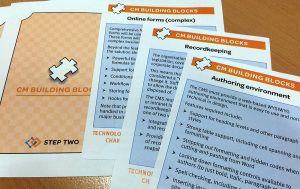Filed under: Content management
The CMS marketplace is undergoing a substantial transformation, and vendors must update their websites to reflect the new environment. With consumers increasingly relying on vendor websites during their selection processes, vendors that fail to meet customer expectations are likely to see a heavy impact on their sales figures.
When content management systems first started to gain prominence, there were only a few major vendors. The goals of their websites were two-fold: to promote the benefits of CMSs in general, and to engage potential customers in the sales process.
With most products being extensively tailored to fit individual customer needs, and prices still in flux, the traditional sales channel was seen as all-important. Websites were dominated by generic statements of features and benefits, and details were deliberately minimised to encourage prospective customers to make contact with sales staff.
There are now hundreds of vendors in the marketplace, and content management systems are becoming increasingly ‘commoditised’. Consumers have read enough independent articles and reports to recognise the value of a CMS; they are now looking to choose between the many vendors.
In this new environment, potential customers are ‘shopping around’, comparing how different CMS solutions meet their specific needs. These customers don’t want to enter the sales cycle until they have conducted a pre-selection process.
There is now an expectation that vendor websites will provide enough detail to allow customers to quickly assess whether the product is likely to be suitable. Websites that fail to deliver this information, or are seen as providing ‘hype’, are simply dropped from the list.
With every indication being that not all of current vendors will survive, it’s a buyer’s market. It is also an opportunity for vendors to build a new reputation for customer service and support in uncertain times.
To meet the needs of this new marketplace, vendors should:
- Match the selection process conducted by their customers.
- Minimise generic sales information and product ‘hype’.
- Provide detailed product information, including clear features and benefits.
- At the very least, outline indicative prices for the product solution, to allow customers to pre-select against their budget.
- Use their websites to showcase their product capabilities.
- Offer comprehensive demos or evaluation copies.
More on these specific recommendations in future posts…




